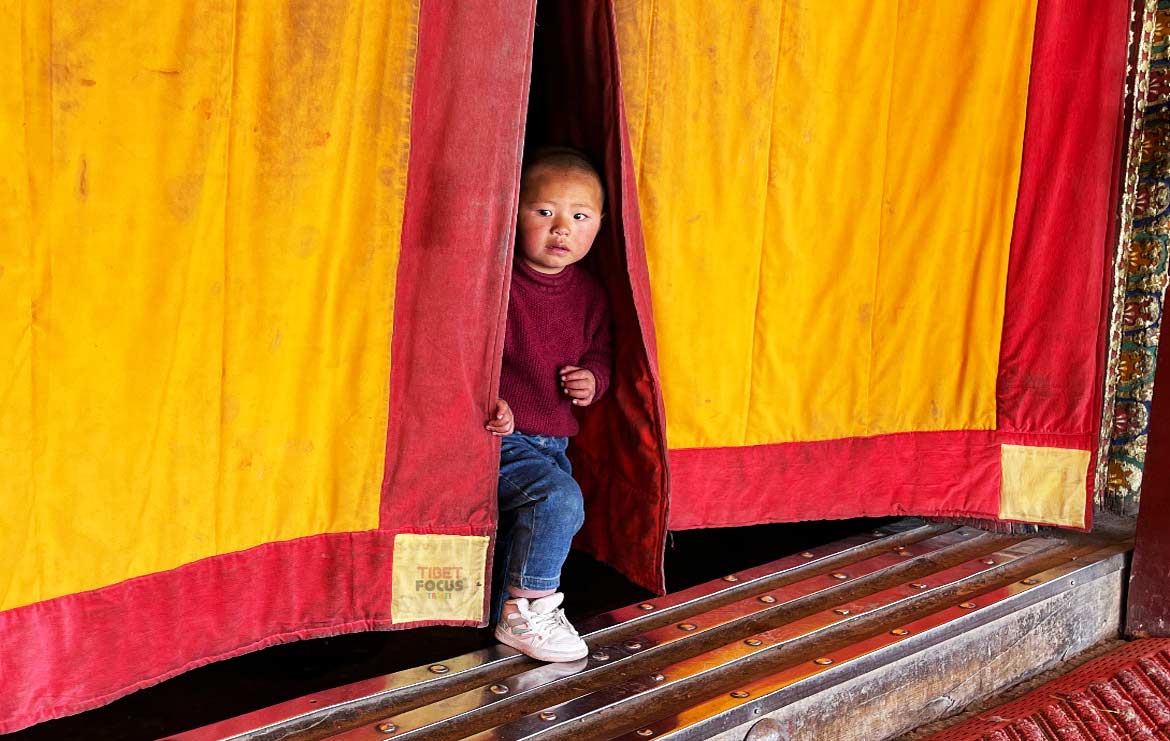What Is Khatag?
A Khatag is a ceremonial scarf that used to give blessings and express congratulations and sympathy. This scarf is called Khatag in the Tibetan language.
There are many reasons why people give Khatags, for example: when a child is born, when couples are married, when someone has died, when someone begins a journey and when someone returns from a trip.
Khatag has a history of more than 1000 years, and in the olden days, people in Tibet use animal skins because there is no silk production in Tibet. The Bon history record shows that people use sheep wool around the neck to attend the ceremonies.
Besides Tibet, Khatag is also using in Nepal, Mongolia and other Buddhist regions around the world.
What is the material of Khatag?
Khatags are made from a kind of silk, and auspicious Buddhist symbols are woven into the materials. Khatags are usually white; however, they can also be yellow, red, blue and green.
They are five different colours; White, Blue, Red, Green and Yellow. These colours represent the five elements in our nature.
- Blue: represent the Sky
- White: represent the Cloud
- Red: represent the Fire
- Green: represent the Water
- Yellow: represent the Earth
On the other hand, Tibetan prayer flags also have five different colours. The five colours in Tibetan prayer flags represent the five-element within one body.
Tibetan peoples hang the prayer flags on the high passes or near the river where the flags are waving by wind or water. This kind of practice hopes to unionise five elements in our body, resulting in free from sickness and pain.
White Khatags are given to ordinary people, while the other four colours are usually offered to Buddhas, Lamas, or monks. It comes in a different size but usually about 2 metres in length. The longer and broader the Khatag is, it represents the more respect you give to the person receiving it.

How we give the Khatag?
The way we give someone a Khatag is very important.
- When we offer Khatag to the monks or Lamas, we usually give by open hands, outstretched arms, and lower the head to show respect. The person receiving it will take it from your hands and put it on their neck.
- When travellers arrive in Lhasa, our tour guide will welcome you by present a white Khatag. Among the ordinary people, we usually place the Khatag over the person’s head and drape it over their shoulders. This offering of Khatag represents the auspicious starting of your Tibet tour.
What is a Khatag in Buddhism?
Khatags have religious purposes. People often take them to temples and monasteries and give them as an offering.
Some people also take it to a monastery to have a monk bless it. They will then take the blessed Khatag back to their home and put it in their place of worship that brings a blessing to the house.
Bless Khatags are also give to friends and relatives as a present.

Where can I get Khatag?
Khatag can buy from many of the vendors around Barkor Street or in other small shops throughout Tibet. Which represent that Khatag plays an essential role in Tibetan culture.
The cost varies up to the qualities and size but mostly around 5 RMB per Khatag. When you receive them, you can keep them and use them again.
If you never been to Tibet, you can buy the Khatag online through Alibaba or Amazon too.
P.S. – Want to go to Tibet? Well, come with me!! I’ll be leading a different kind of tour to Tibet! I’ll be taking you to my favourite restaurants, attractions, bars, and sights. We’ll hit the off the beaten stuff you won’t find in any guidebook. If you’re interested, click here to learn more about the itinerary and how to join.
Want to share your tips and advice? Have you got any questions? Visit our homepage to ask questions, get answers, meet people, and share your information!


